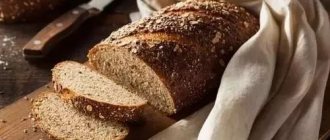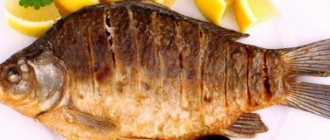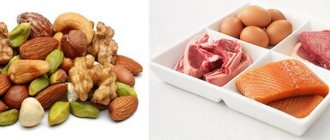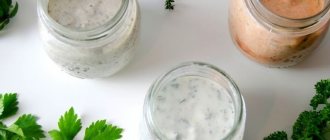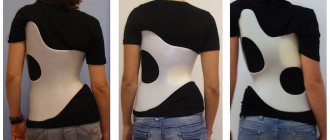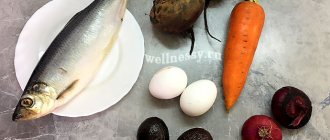| How to replace gluten | Description |
| Protein isolate | On the Dukan Diet, gluten-free foods should be used. Protein isolate can replace it because it has the same baking enhancement properties. It is often included in dietary desserts. |
| Guar gum | It is a natural product obtained from the beans of the guar tree. Guar gum adds the necessary volume to the dough and is used as a complete flour substitute. |
| Psyllium | Psyllium is a soluble fiber. In the dough it is used instead of yeast, so if the recipe calls for gluten, it is better to use this analogue. |
| Xanthan gum | This product is great for recipes that require the addition of yeast. It is obtained from corn. |
| Bean flour | You can use flour from legumes in baking. There is no gluten in it. The advantage of legume flour is its high protein and fiber content. However, it contains a small amount of fat. |
| Buckwheat flour | This product is gluten free. Buckwheat flour is rich in protein and amino acids that are beneficial for the human body. |
| Cornmeal | This product can be either regular or coarse. In the process of preparing gluten-free baked goods, flour imparts an original taste to the products. |
| Potato starch | This familiar product is gluten-free. Another advantage is that it adds extraneous taste and smell to dishes. |
| Sorghum flour | Of all the types of flour that do not contain gluten, this product has the most healthy composition. This flour is practically tasteless and odorless and can be added to other gluten-free baking mixtures. |
| Rice flour | The product is made from brown and white rice. Each type has a number of its own advantages. |
Gluten is a vegetable protein from wheat, rye, and oats. Combined with water, it turns flour into dough. It is important to know that it is this component that often causes the development of allergic reactions and the development of gastrointestinal diseases.
Those who adhere to the principles of healthy eating and are on the Dukan diet are constantly looking for options to replace gluten. Available analogues allow you to make healthy baked goods and other dishes at home for all family members.
Rice flour
Brown rice flour contains large amounts of healthy bran. You can choose a very fine grind or just a fine grind, but in this case there will be particles of rice grains in the flour.
White rice doesn't have as many nutrients, but many people like its versatility. This flour does not have a strong taste or smell.
There are many options for replacing gluten when switching to a healthy and proper diet. Based on such products, you can easily make delicious baked goods and delicious desserts.
How to replace gluten on the Dukan diet
Unfortunately, it is unrealistic to replace gluten with bran; these are essentially different products. Bread will not work with bran, as it does not give the dough the required viscosity. Therefore, gluten is used as a basis for dough, in an amount not exceeding 2 tablespoons per day.
However, there is one important point that needs to be taken into account when following the Dukan diet and introducing gluten into the diet. In order to bake bread, you need to add this powder, but for some it is harmful. With a disease such as celiac disease, you need to precisely control the amount of gluten in your diet.
In other words, if you are diagnosed with celiac disease, you should replace the gluten in Dukan Diet dishes with other ingredients. This can be wheat bran finely ground into flour, or oat bran in the form of flour. You can also refuse to eat such bread, replacing it with something harmless from the range of baked goods presented on the menu of this diet.
Gluten-free flour: what are your options?
Food
May 31, 2018
Experts recommend limiting the consumption of gluten-containing foods, even for those who do not have a gluten allergy. The fact is that over the past 50 years, the human diet has become too rich in products made from wheat and rye flour.
It is difficult for the digestive system to cope with so many rolls, pasta and flour sauces, as well as industrially produced yoghurts, in which gluten or modified starch is added for a tender consistency.
As a result, seemingly absolutely healthy people develop problems such as flatulence, acne, dermatitis, and permeability of the intestinal walls.
Gluten-free flour - an assistant to a healthy diet
A healthy diet containing a minimum of gluten can get rid of all these troubles. But many people are worried about how to live without baking, pasta and other flour products? There is no need to give up delicious food at all.
Gluten-free flour comes to the rescue: buckwheat, coconut, from different types of peas and nuts, flaxseed, rice, amaranth.
But each of them has its own beneficial properties and culinary features, which are best understood in advance.
How to cook gluten free
Gluten is a complex protein, thanks to which baked goods made from wheat and rye flour rise, become fluffy and elastic.
Gluten-free flour does not have this property, so you cannot simply replace one type of flour with another in a recipe, and the resulting baked goods will still be denser and moister than usual.
To bring the taste closer to the traditional one, you can add eggs, cottage cheese or ricotta to the dough. Just not all at once - you will have to experiment with products and proportions.
1/ Buckwheat flour
High content of vegetable protein, low calorie content, a harmonious set of vitamins and minerals - everything that we love about buckwheat is also present in its flour.
Darker than wheat flour, the powder has a pronounced taste.
This is both a plus and a minus of the product: the taste of buckwheat always dominates, so it is better to use flour from it for breading cutlets, preparing thick sauces and savory baked goods - cookies with herbs and cheese, flatbreads, pancakes.
Ideal dish: buckwheat pancakes
In a deep bowl, mix 150 g of sifted buckwheat flour, one egg and a pinch of salt. Pour 400 ml of warm rice or almond milk into the resulting mixture in a thin stream, constantly kneading the dough.
Once the mixture is smooth and homogeneous, heat a small non-stick frying pan and grease it with coconut oil . Using a ladle, pour the batter into the pan and fry the pancakes for 2-3 minutes on each side.
They cannot be made as thin as regular pancakes - the thickness should be about 0.5 cm.
2/ Chickpea flour
It is obtained from ground chickpeas - beans valued for their high protein, fiber and phytoestrogens content.
Thanks to this composition, all chickpea dishes help you lose weight, have a beneficial effect on digestion and are very beneficial for women's health.
In the Middle East, chickpeas are always prepared for pregnant and lactating women - they help maintain hormonal balance.
Ideal dish: omelette with chickpeas and vegetables
Mix in a blender until completely smooth 120 ml of water, 100 g of tofu or cottage cheese, 3 tbsp. l. chickpea flour, 1 tbsp. l. olive oil and a pinch of salt, ground black pepper and dried oregano.
Pour the mixture into the hot pan, cook for 3 minutes, then turn over and cook for another 2-3 minutes. In another frying pan, prepare the vegetable filling: fry finely chopped onion, tomato and bell pepper in rice oil.
What is gluten
In fact, gluten, or gluten as it is also called, is a vegetable protein found in cereals, often its content reaches up to 20%. I would like to separately note that this is an absolutely natural product . It is obtained simply by washing out the starchy substances from cereal flour. It is gluten that gives flour dough its elasticity. Gluten also has a positive effect on the quality of baked goods and pasta - it makes them more fluffy and tasty, and allows them to not become stale or spoil longer.
Is gluten “legal”?
If Pierre Dukan does not oppose gluten , then it is necessary to decide on the standards for its use. Excess gluten causes discomfort in the digestive system: flatulence, bloating. In large quantities, it impairs the ability to absorb nutrients from food.
The word “gluten” is most often associated with celiac disease, an allergy to plant protein. Eating bread, cereals, and pastries, people do not think about abdominal discomfort:
- whether gluten intolerance is the result of abuse of flour and its derivatives;
- or other factors cause the body's inability to digest gluten.
The use of gluten on the Dukan Diet is a personal decision.
Gluten has disadvantages and advantages: it improves the final result of baking, it does not contain carbohydrates. But it is worth remembering that the product is not 100% safe just because it is found in small concentrations in the normal diet.
Methods of using gluten:
- baking bread, pancakes, cookies;
- preparation of semi-finished products.
- extending the service life of baked goods;
- improving dough elasticity;
- increasing the yield of the finished product by 5-7%.
Harm or publicity stunt?
At first, only doctors spoke about the possible harm of gluten. Then they considered it to be associated with only a couple of possible cases:
- celiac disease. Malfunction of the intestines. The patient cannot tolerate gluten, which causes an immune reaction. However, it is a rare disease that affects about 1% of people on Earth;
- wheat allergy. The disease is even more rare than celiac disease.
At the same time, newly discovered sensitivity to gluten is very difficult to detect. All its manifestations are very nonspecific. Malfunctions of the digestive system can occur from a variety of foods.
You can test yourself for gluten intolerance through experiment. It is enough to give up all products containing gluten for a month and a half, and after waiting this period, begin to gradually add products with gluten to your diet. At the same time, you need to look at your well-being. It is recommended to start with “clean” products. The diet cannot be changed.
There is currently no scientific evidence that gluten is harmful to a healthy human body. Moreover, in Japan and the Mediterranean there are many long-lived people, and in both Japanese and Mediterranean cuisines there are many traditional dishes rich in gluten.
Marketing successfully took advantage of the trend for a healthy lifestyle and the presence of sensitivity to gluten in some people. Around the globe, stores now have gluten-free items and even shelves. Yes, many of these products are healthy in composition. But there are also those that, even with all the desire, cannot be called healthy food, since neither a large amount of sugar, nor palm oil, nor coconut oil can definitely be called something that can be contained in healthy foods. And saturated fatty acids are harmful to the heart and circulatory system.
Dangers of Gluten
Gluten sensitivity and celiac disease are cases associated with a complete ban on products with this substance.
It is difficult to completely eliminate gluten consumption, since it is present in sauces, semi-finished products, and any baked goods, even those without sugar, cocoa, or chocolate, but in minute quantities. The Dukan diet advocates replacing flour with gluten and consuming almost 60 g per day , although the maximum health limit should not exceed 5-20 g for a person who tolerates the substance normally.
A side effect of gluten is its ability to accumulate in the body. It can stick together the hairs of the small intestine, causing degeneration of the mucous membrane. As a result, the ability to absorb nutrients from foods is lost: vitamins, minerals.
The result of excess gluten, even without celiac disease, is:
- inflammatory processes;
- liver and gallbladder diseases;
- acne.
An organism experiencing a lack of vitamin and mineral elements reports this with weakness and sleep disturbances.
What is it and what is it eaten with?
In its pure form, gluten is a grayish, tasteless mass.
But it is thanks to gluten that flour mixed with water turns into an elastic, sticky mass - dough. This is what dry wheat gluten looks like.
From the above it follows that of gluten (oatmeal, barley, rye), but only wheat gluten is widely used. You and I are interested in it, and we will continue to talk about it.
Where do they use it?
Wheat gluten is used in baking various bakery products, in the flour-grinding industry, in the pasta industry, in the preparation of frozen foods, etc.
Gluten gives baked goods a special tenderness. In addition, it acts as a preservative - adding dry gluten extract to flour significantly extends the shelf life of baked goods made from this flour. In the bakery industry, it is used specifically to increase the firmness and elasticity of dough. Gluten also allows you to increase the yield of the finished product by 2-7%
Why is gluten interesting for us?
I want to honestly tell you that gluten has been known to me for a long time, but I still didn’t dare to cook baked goods with gluten - there is too much information about gluten-free diets, allergies and products with “Gluten free” labels.
However, I still turned to baking with gluten when the daily intake of gluten on the Dukan diet decreased to 2 tbsp. in a day. And now I will tell you about all the pros and cons of gluten that I was able to discover.
So, the advantages of gluten:
- on the Dukan diet, gluten is not considered an additional supplement
- can be used on a diet in the amount of 2 tbsp. per day (new norm from October 26, 2014)
— can be used at any stage of the diet, starting with Attack
— by adding gluten to the dough, the volume of the finished product increases.
— gluten increases the shelf life of baked goods
— since we mainly use bran for the dough, the dough turns out “heavy” for the yeast. In this case, adding gluten will help make the dough more elastic and easier to rise.
— baked goods using gluten are actually more tender and airy.
Cons of gluten:
- Gluten is harmful for some people - people with a special disease - celiac disease. These people should not eat gluten.
- gluten sensitivity not associated with celiac disease (symptoms can be easily found on the Internet)
There are a lot of wheat gluten producers, both foreign production - France, Germany, Denmark, the Netherlands, Kazakhstan - and our domestic producers (Adygea, Tula, etc.). The choice is very wide.
To use gluten or not to use gluten on the Dukan Diet?
I can't give specific recommendations here. All the pros and cons are described, it’s up to you to decide!
And if you decide to use it, remember - you can use 2 tbsp. per day at any stage, no more!
That's probably all about gluten and its use in our diet. I hope the article was useful to you.
Good luck with your weight loss!
Copying the text of the article is permitted only with a link to the site.
PS To avoid all sorts of questions about where to buy and which one to buy, I’ll say right away - look in health food stores or online stores, such as my favorite partners Diet-M
Be the first to know about the Dukan diet
I talk about allowed foods, changes in diet stages, new recipes for main dishes and sweets, share my experience of losing weight and answer questions. There are also newsletters about discounts on my cakes.
How to replace products containing gluten?
The main source of gluten is wheat, or rather flour from this grain crop and then all food products obtained from it. It is wrong and even impossible to take and cross out entire categories, since carbohydrates form the basis of the diet. You just need to switch to products made without wheat, as well as rye and barley flour. The list of gluten-free products is huge.
Here are some recommendations:
- Porridge should be prepared from grains that do not contain gluten. You will have to forget about semolina, barley, bulgur, but you can eat buckwheat, rice, millet and many exotic grains. Here's a complete list of gluten-free grains. They make tasty not only porridges, but also casseroles and soups.
- Pasta made from premium wheat flour must be replaced with buckwheat and rice. They are completely different in appearance and taste and are available in every major supermarket. For example, Makfa has spaghetti, feathers, rice and corn spirals. The famous Italian brand Barilla makes some of its products from a mixture of the same grains. The Polish manufacturer Incola produces vermicelli entirely from corn; the “queen of the fields”, by the way, also comes in white. Since pasta does not spoil for a long time, you can safely buy it online.
- The usual types of cookies should be replaced with oatmeal or corn. You just need to be careful with them, look for those marked gluten free, otherwise you can buy them with an admixture of wheat flour. It’s even better to make these baked goods yourself. There is no clear answer to the question of whether there is gluten in oatmeal or whether it can be consumed if you have celiac disease. Its avenin proteins are not completely equivalent to gluten, but nutritionists in different countries argue whether oats should be allowed on a gluten-free diet or not.
- If desired, you can make your own crackers (sweet or salty with spices) from gluten-free bread, and also make breading from them. In addition to breadcrumbs, it is permissible to roll fish or cutlets in ground cereals (oatmeal, corn).
- Starch from corn, potatoes or special additives such as agar-agar, xanthan and guar gum are useful as a thickener. This is an analogue of gluten; they will help you cook cream, sauce, and prepare desserts.
At first it is very difficult with baking. Dough for pancakes, pies, pizza, biscuits and other cakes without wheat gluten is not so elastic and porous. But since the choice of gluten-free flour is huge, by mixing different types you can get a more crumbly or sticky dough, depending on what products it is required for. Read about the features and types of gluten-free flour at the link.
Gluten intolerance and harm
Now many people are speculating on the concept of the harmfulness of gluten to the human body . This is most likely due to the fact that the gluten-free food industry has certain business interests. The fashion for gluten-free diets came from the USA. There, in 2005, the amount of gluten-free products consumed was 2%, and in 2010 it was already 10%. The result is obvious.
In fact, gluten is only harmful to those people who have a congenital gluten intolerance disease called celiac disease. Intolerance most often manifests itself at a very early age - up to one year. The treatment for this disease is a gluten-free diet. There are no other medications. The level of such congenital morbidity is only 0.3-1%, that is, 3-10 people out of a thousand.
For all other people who are not intolerant to gluten, gluten is harmless, does not cause any side effects and does not harm the body. Rather, on the contrary, gluten is an excellent source of protein, and, accordingly, essential amino acids for the body. And gluten-based products, such as seitan, which consists of gluten, are considered healthy foods
